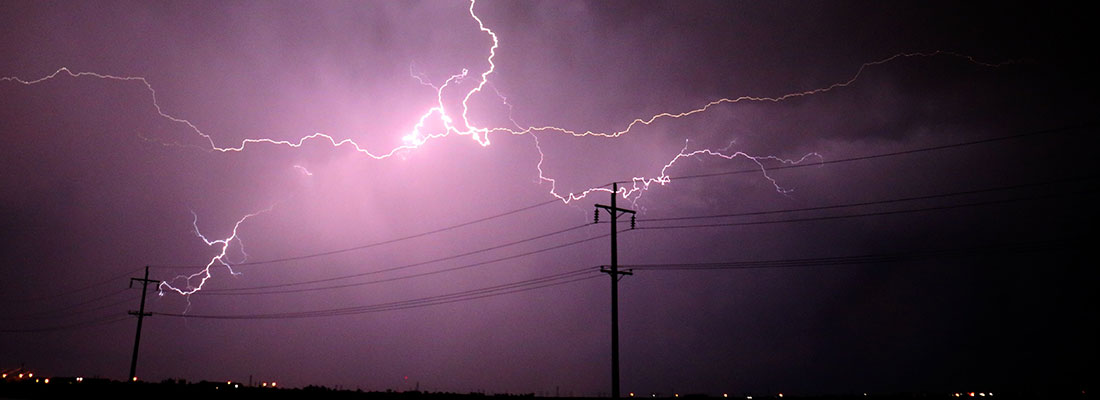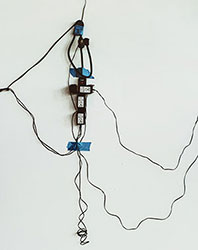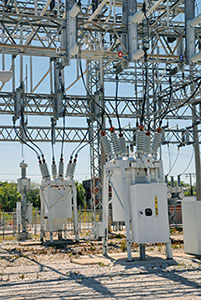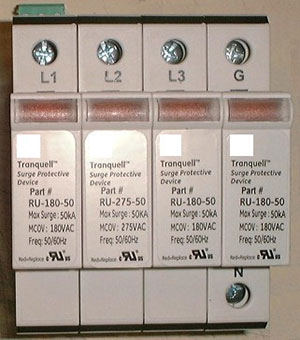
Electricity is fundamental to our modern lives and is the bedrock of what runs our homes and keeps businesses running, including their LED signage. Knowing how vital electricity is, it’s crucial to have a reliable, uninterrupted supply. However, despite utility companies’ best efforts, power surges occasionally occur and throw a wrench into the functionality of electronics. But fear not; the detrimental effects of power surges can be minimized through a surge protective device (SPD).
What is a Power Surge and How Does It Happen?
As the name indicates, power surges are brief periods of higher electrical power than usual. In the U.S., most plugged-in items run on 120 volts, but can range between 110 volts and 220 volts. Power surges happen frequently, can be big or small, and depending on their size, can cause reductions in the performance of devices or damage and even destroy them.
Power surges happen in three ways - when the electrical flow is interrupted followed by a power short; when delivery of electrical power to a device is interrupted and sent flowing back to the electrical system; and when there is a sudden increase of voltage sent through a power system from either an internal or external force.
The National Electrical Manufacturers Association (NEMA) estimates that 60 to 80 percent of power surges come from internal forces. These include:

- Appliances turning on/off
- Faulty wiring/loose wiring connections – any damaged, exposed, or improperly connected wires can cause power surges
- Overloaded circuits – typically cause a power surge by drawing too much power from a single circuit, e.g., overusing extension cords
- Short circuits – are electrical circuits that allow a current to travel along an unintended path with no or very low electrical impedance. This results in an excessive current flowing through the circuit, aka a power surge.
External forces can also be responsible for power surges. These include:

- Lightning strikes – while lightning rarely strikes electrical devices directly, it does strike power lines. Electrical systems have no option but to accept the excess current, causing a spike in voltage, and, consequently, a power surge.
- Damaged power lines and transformers – weather, animals, trees… just about anything outside has the potential to damage power lines and transformers. When this does happen, power surges can occur.
- Restoration of power after an outage – a lack of electricity isn’t a cause of concern for electrical devices, but restoring power to them is. There is often a jump in current when power is restored after an outage, resulting in a power surge with the potential to damage electronic devices.
Protecting Electronics from Surges with SPDs
With power surges being such a common, and potentially devastating, occurrence, it’s critical to take proper steps to protect electronic devices from them. There are many ways to do this, but the most comprehensive solution is using a surge protective device (SPD). An SPD is a protective device that limits transient voltages by redirecting or limiting surge current. SPDs are a cost-effective solution to prevent electrical component damage, prevent electrical system downtime, and improve electrical system reliability. In fact, they are so good at this that the 2020 National Electrical Code (NEC) requirements state that all new and renovated constructions be protected by listed and approved either Type 1 or Type 2 SPDs.
A Type 1 Surge Protective Device is permanently installed inside or outside the building structure. They are intended to be installed between the secondary of the service transformer and the line side of the service equipment overcurrent device and the load side, including watt-hour meter socket enclosures. They are intended to be installed without an external overcurrent protective device.

A Type 2 SPD is permanently installed in, or next to, an electrical breaker box. They are intended for installation on the load side of the service equipment overcurrent device, including SPDs located at the branch panel.
Extra protection against power surges for electrical devices can be found by using a Type 3 (point-of-use, e.g., surge protection power strip) surge protective device in conjunction with a Type 1 or Type 2.
The NEC is not a legally binding document as its publisher, the National Fire Protection Association, has no authority to create laws or legally enforceable regulations. However, each state in the U.S. adheres to some version of the NEC, and municipalities typically pass laws and ordinances regarding electrical installations according to NEC standards.
Have you installed, or are you thinking about installing, LED signage at your business? Investing in and installing SPDs with illuminated signage is the best way to protect your investment from the detrimental effects of power surges. Contact our knowledgeable sales and engineering staff anytime to learn more about the best LED signage for your business and to learn what you can do to ensure it provides directional guidance for years to come.



